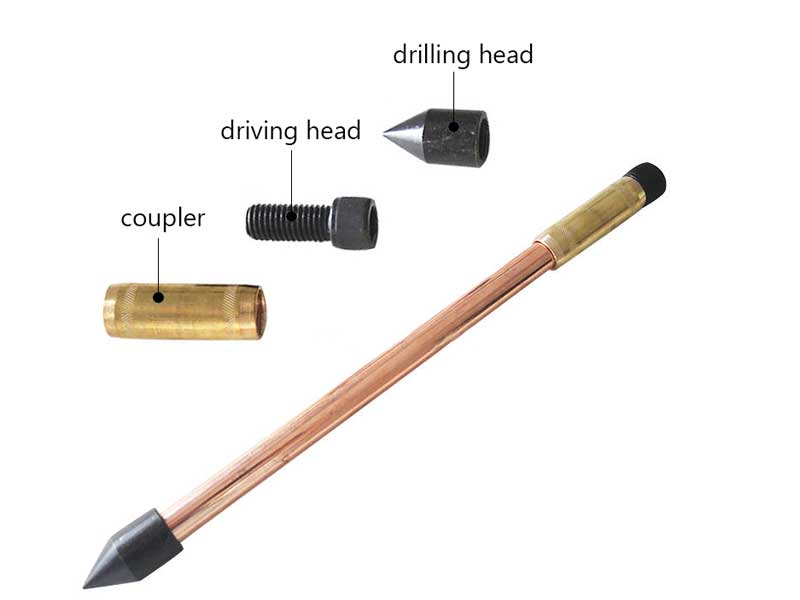Product Overview
Copper Bonded Earth Rods are critical components for effective earthing systems, designed to safely dissipate fault current into the ground and protect electrical infrastructure from damage. These rods are the most widely used type of grounding electrodes due to their superior conductivity, corrosion resistance, and mechanical strength.
Manufacturing Process
Each rod is manufactured by molecularly bonding a layer of 99.95% pure copper onto a low carbon steel core using an advanced electrolytic plating process. This method ensures a robust and uniform copper coating (≥254 microns) that is free from cracks, holes, and voids, providing full protection against corrosion and moisture penetration.
Product Features
-
Made with 99.95% pure copper and low carbon steel core
-
Copper layer thickness ≥ 254 microns
-
Tensile strength: 450–750 N/mm²
-
Capable of being bent 180° without cracking
-
Service life > 50 years
-
Available in standard diameters: 1/2”, 5/8”, 3/4”
-
Threaded and tipped options available
-
Fully automatic electroplating production line ensures consistency and high-volume output
-
Easy to install; excellent electrical conductivity and corrosion resistance

Applications
-
Power stations and substations
-
Transmission and distribution lines
-
Petrochemical facilities
-
Photovoltaic solar power systems
-
Railway and urban rail transit systems
-
Storage tanks and industrial plants
-
Communication base stations
-
Network and data centers
Installation Guidelines (as per relevant regulations)
-
Burial Depth:
-
The top of the rod should be buried at least 0.6m below ground, unless otherwise specified.
-
Steel and angle iron rods must be installed vertically.
-
All welds and exposed parts must be treated with anti-corrosion coatings after surface cleaning and rust removal.
-
-
Spacing Requirements:
-
Vertical rods should be spaced at 3–5 times their length apart.
-
Horizontal conductors should be spaced at a minimum of 5 meters, unless design indicates otherwise.
-
-
Distance from Structures:
-
Except for ring grounding systems, rods should be placed at least 3m from buildings, sidewalks, or entrances.
-
If less than 3m, a pressure-equalizing belt must be used or a 50–90mm asphalt layer must be laid, extending 2m wider than the grounding system.
-
-
Backfill Requirements:
-
The foundation pit must be free of stones and construction debris.
-
Only non-corrosive soil should be used for backfilling, compacted in layers.
-
-
Sub-grounding Systems:
-
For systems comprising multiple interconnected grounding devices, a disconnect card should be installed as per design, allowing for easy maintenance and separation.
-
